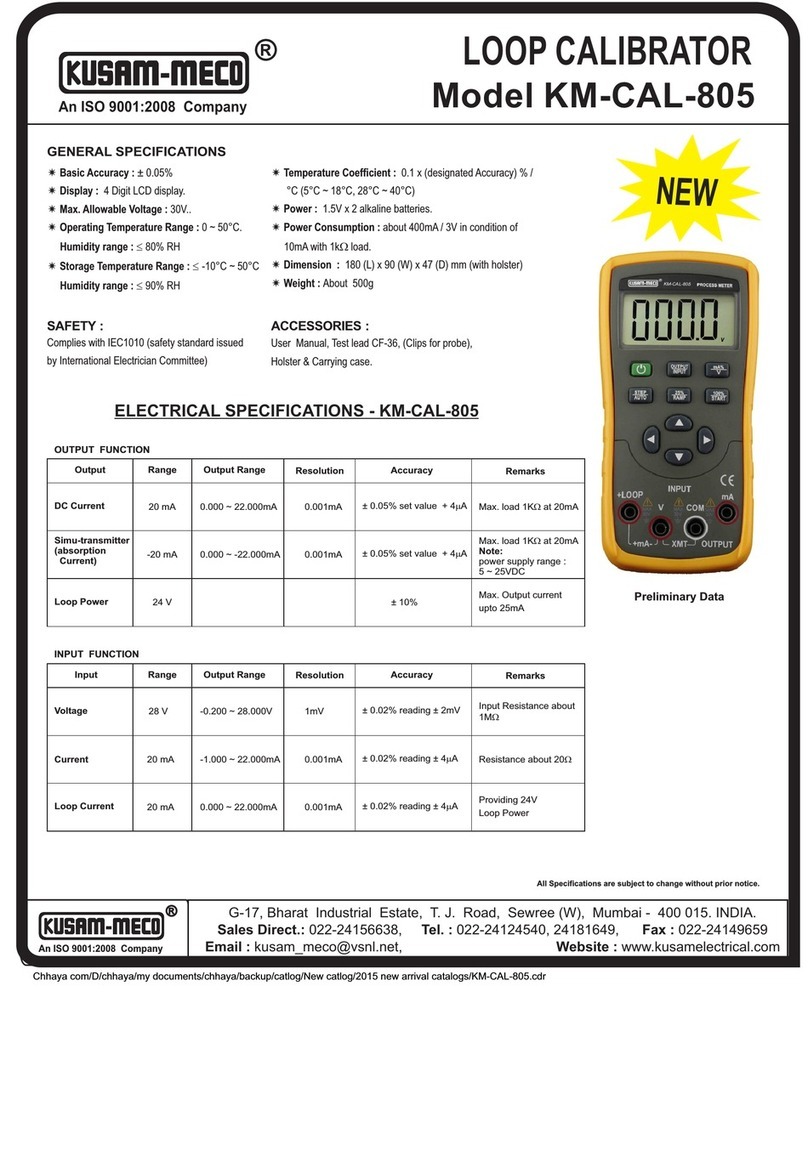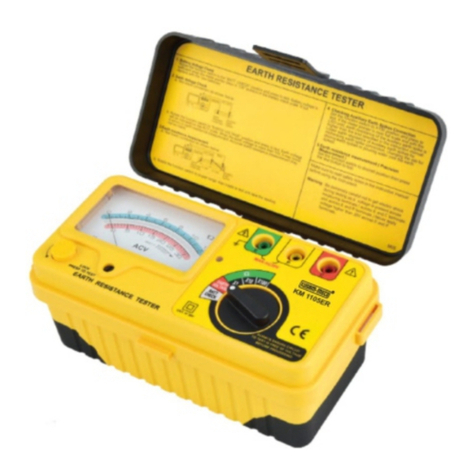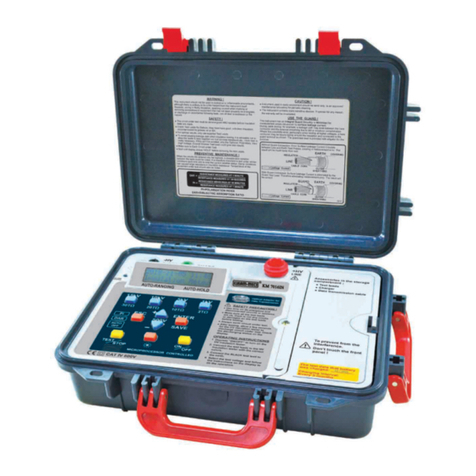
®
T
h
e
c
o
n
t
e
n
t
o
f
t
h
e
o
p
e
r
a
t
i
o
n
i
n
s
t
r
u
c
t
i
o
n
i
s
r
e
g
a
r
d
e
d
a
s
c
o
r
r
e
c
t
.
W
h
e
n
e
v
e
r
a
n
y
u
s
e
r
f
i
n
d
s
i
t
s
m
i
s
t
a
k
e
s
,
o
m
i
s
s
i
o
n
,
e
t
c
.
,
H
e
o
r
s
h
e
i
s
r
e
q
u
e
s
t
e
d
t
o
c
o
n
t
a
c
t
t
h
e
m
a
n
u
f
a
c
t
u
r
e
r
;
T
h
e
p
r
e
s
e
n
t
m
a
n
u
f
a
c
t
u
r
e
r
i
s
n
o
t
l
i
a
b
l
e
f
o
r
a
n
y
a
c
c
i
d
e
n
t
a
n
d
h
a
z
a
r
d
a
r
i
s
i
n
g
f
r
o
m
t
h
e
c
u
s
t
o
m
e
r
m
i
s
u
s
e
o
r
i
n
a
d
v
e
r
t
e
n
t
o
p
e
r
a
t
i
o
n
;
T
h
e
f
u
n
c
t
i
o
n
s
d
e
s
c
r
i
b
e
d
i
n
t
h
i
s
o
p
e
r
a
t
i
o
n
i
n
s
t
r
u
c
t
i
o
n
s
h
o
u
l
d
n
o
t
b
e
u
s
e
d
a
s
g
r
o
u
n
d
s
t
o
a
p
p
l
y
t
h
i
s
p
r
o
d
u
c
t
t
o
a
p
a
r
t
i
c
u
l
a
r
p
u
r
p
o
s
e
.
®
03
The meter is powered by two LR6 alkaline batteries (AA).
To avoid electrical shock or personal injury:
Remove test leads from the meter before opening the battery door.
Close and latch the battery door before using the Meter.
The new and old batteries can not be mixed.
Make sure the battery's odes are in accordance with the marks illustrated in
battery pool when replacing them.
Take out the batteries if the meter won't be used for a long time.
Dispose the old batteries in accordance with the local law.
1. Turn the rotary switch to OFF and remove the test leads from the terminals;
2. Take off the support of the meter, remove the battery door by a standard-
blade screwdriver, and then take off the battery case;
3. Replace with two new batteries;
4. Reinstall the battery case, spin the screws and tighten screws.
Indicates the graduation no. of thermal resistance(RTD)
Section Three Maintenance
This section provides some basic maintenance procedures. Repair, Calibration, and
servicing not covered in this manual must Be performed by qualified personnel. For
maintenance procedures not described in this manual, contact a Service Center.
(1)General maintenance
Periodically wipe the case with a damp cloth and detergent; do not use
abrasives or solvents.
Take out the batteries if the meter won't be used for a long time.
Dirt or moisture in the terminals can affect readings.
Clean the terminals as follows:
1Turn the meter off and remove all test leads.
2Shake out any dirt that may be in terminals.
3Soak a new swab with alcohol. Clean each terminal with the swab
( 2 )Replacing the batteries
Warning
Note
Replace the batteries as follows (See Figure 3-1):
!
!
04
Figure 3-1 replacing batteries
Press〔power〕key to electrify the meter, and repress〔power〕key for more
than 1 second to cut off the power.
When turning on the power, the meter starts to make inner diagnose and display in
full screen, and then undertakes corresponding operation.
Section Four Power on/Power off the Meter
(1)Turn on/off the meter
Note
To ensure correct electrifying operation, please wait for 5 seconds to turn on the
meter after cutting off the power.
(2)Automatically turn off the power
The default factory value is set as: the meter will automatically turn off if no
operation has been made within 15 minutes. The Users can set by themselves
to choose whether using this function or not (See detailed section).
Section Five Output of the Meter
The Instrument may output resistance or thermal resistance analog signal set by
the User through corresponding terminal (OUTPUT).
Caution
Do not apply any voltage to output terminal; otherwise damage to interior circuit
may occur if the voltage is not proper.
(1)Resistance or thermal resistance(RTD)simulate output
Note
·Resistance simulate: The meter generates a simulate Resistance value
Ranging from 400 to 4000 from the output terminal (RTD/Ω). The output method for
simulate resistance is that the meter output scorresponding voltage “Vx “ according to
incentive current “Ix” generated by the calibrated meter, and for the R(set resistance)
equals to Vx (output voltage)/lx(incentive current), thus the calibrated body should
supply a simulate
!
!
!










































